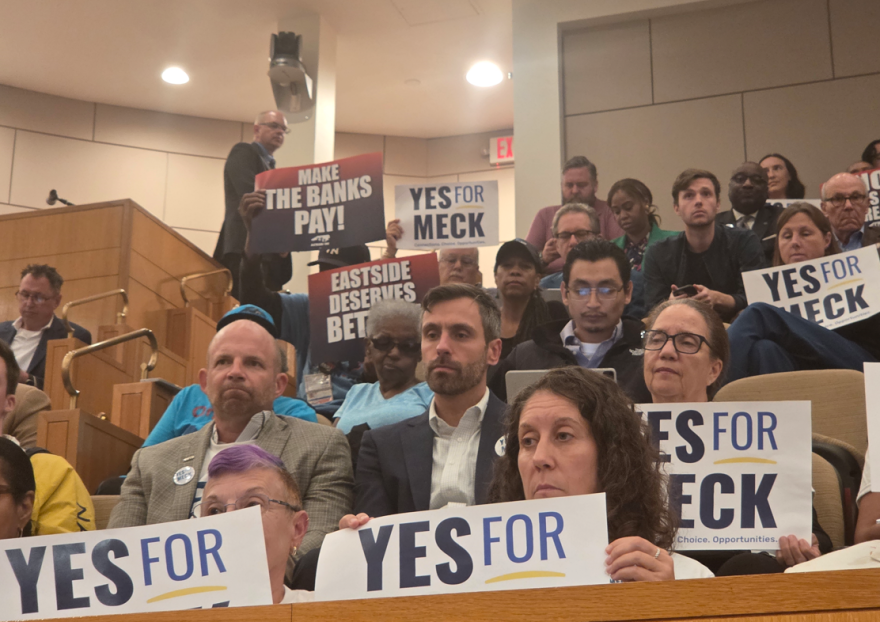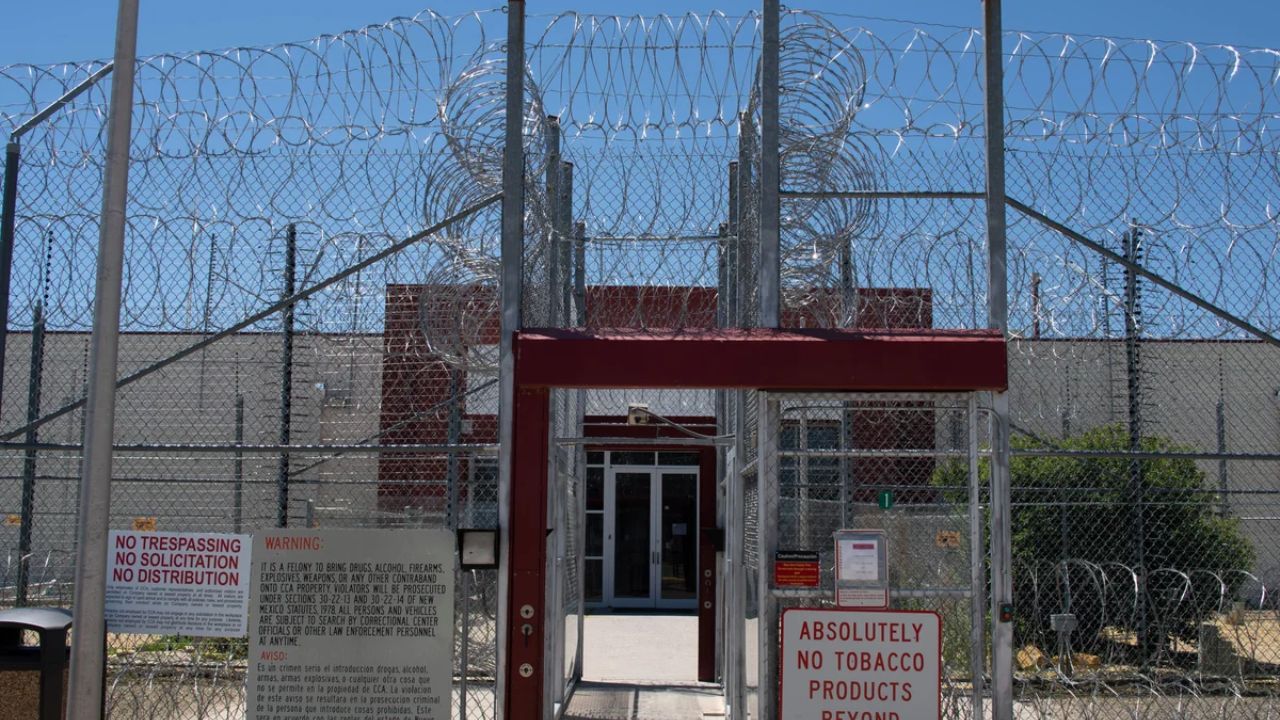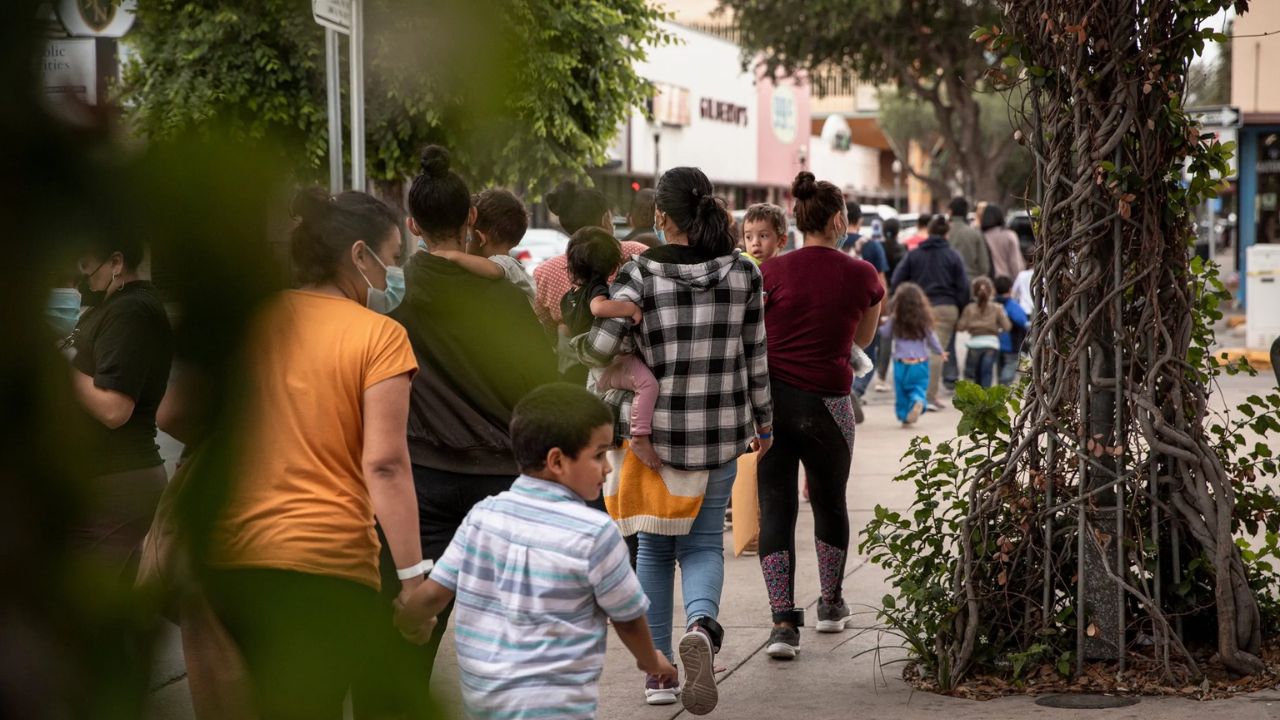The decision to raise the sales tax by one percentage point, to 8.25%, to fund a multibillion-dollar transportation and road plan will be made by Mecklenburg voters in November.
In front of a crowded room of supporters, the Mecklenburg Commissioners voted 8-1 on Wednesday to put the tax referendum on the ballot.
It’s important to note some of the odd coalitions that have emerged from the lengthy transit debate before moving on to a fact check.
Republicans are among the leading proponents of the one-cent sales tax: Larry Shaheen, attorney; Ed Driggs, member of the City Council. Tricia Cotham, state representative.
To get the tax authorized, the Charlotte Regional Business Alliance is leading a $3 million campaign. Although the alliance is nonpartisan, a large number of its members lean more conservative than the county as a whole.
Furthermore, very few speakers at the public debate on Wednesday rejected the idea from the usual conservative stance of opposing tax increases and favoring a smaller government.
There are numerous sympathizers on the Democratic side, including elected officials, proponents of public transportation, and leaders in nonprofit and religious organizations. However, it’s also true that the extreme left is currently the group with the loudest opposition: Jennifer Roberts, former mayor of Charlotte. Braxton Winston, a former member of the City Council. Action North Carolina’s Robert Dawkins.
There you have it: liberals who support limited government and conservatives who support taxes?
This newsletter will examine some of the arguments made against the tax and determine whether they are valid.
This week, the Business Alliance issued talking points to refute their assertions. The partnership will also be fact-checked by Inside Politics.
What the opponents are saying
From 2015 until 2017, Roberts served as mayor. The one-cent rise in the sales tax, in her opinion, is too costly and will harm those with lower incomes. Instead, she would like to ask voters to support a quarter-cent increase in the sales tax that can be spent for anything in Mecklenburg County.
The regional will be able to continue working on a funding package for the rail line, which could include creative funding that does not unjustly burden the poor, such as tax increment financing, parking fees, rental car fees, naming rights, advertising revenues, station rents, municipal service districts, etc., she said in an email to Mecklenburg commissioners, adding that the quarter-cent tax would provide funds immediately to implement Charlotte’s Better Bus program.
The issue with such other funding sources is that they have already been investigated and just don’t produce nearly enough revenue to support train lines worth billions of dollars.
That may be the case, Roberts remarked in an interview.
But don’t blame me, she added. She simply borrowed that wording from the GOP plan that Republicans have supported and that Cotham prepared.
In reality, Cotham’s bill stipulates that a review of alternate funding sources for the Silver Line light rail project in Matthews must be conducted. According to the report, the area ought to research options such as tax increment financing, public-private partnerships, municipal service districts, the sale of naming rights, station rents, station air rights, advertising revenues, the sale of public transportation amenities (like Wi-Fi or priority seating), and private donations.
Roberts also brings up issues with low bus ridership, gentrification, and affordability.
Dawkins, a veteran activist, shares many of her worries. This week, he posted ten arguments against the tax on social media on behalf of Action NC. You are able to read.
“The past performance of Charlotte Area Transit Systems speaks a great deal about one’s ability, future success, and likelihood for future success,” he wrote. According to him, the Lynx Blue Line’s second phase was shortened in order to save money because both of its parts were overbudget.
All of that is accurate.
Dawkins went on to say that bus routes were eliminated and that CATS personnel numbers eventually became problematic. That took place in 2022. While the tax dollars will also enable higher service frequencies in previously untapped areas, a portion of the funds allocated to Better Bus will be used to restore that service.
To reassure us, he added, they haven’t even disclosed ridership estimates, project costs, or employed someone to administer CATS.
Actually, cost estimates for every rail project have been made public by CATS. Dawkins is right, though, in that the transit agency has not disclosed estimates of the number of passengers that will utilize each rail line or the system after Better Bus is finished in five years.
Dawkins also has doubts about microtransit, which is a key component of the Better Bus initiative.
CATS’s new on-demand ride-sharing service, Microtransit, aims to take on Uber. Within a specific area, it enables users to call a car to pick them up from their home (or anyplace else) and transport them to their destination. Micro was just launched by CATS in North Mecklenburg. The service would be extended to around 20 zones across the county if the tax is approved.
Microtransit is being lauded as a way to cut down on travel time, but without reserve funds to cover the highly high subsidies to run, it will most likely be curtailed due to the high cost with growing ridership, according to Dawkins’ manifesto.
This might actually occur. Every month since it opened, Micro has drawn more riders. It carried 4,900 people in June, compared to 3,700 in May.
Micro’s monthly fixed costs are considerable, at about $185,000. That currently amounts to almost $40 in taxpayer costs per trip (not including the rider’s $2.20).
However, CATS does not have to pay an additional $40 for the journey when Micro adds a new passenger. As previously said, micro has significant fixed expenses, thus the more users it has, the more effectively it runs.
The service might grow so well-liked that CATS needs to hire more drivers and purchase additional cars, which would increase fixed expenses. Having that problem would be beneficial. However, it might result in fewer services elsewhere.
What the Business Alliance says
The effort to enact the tax is being spearheaded by the Charlotte Regional Business Alliance. A press statement titled “Separating Fact from Fiction” was delivered to the media early this week by the D. Wilson Agency, a public relations firm that the alliance had hired.
The Alliance complete release is available here.
Some of their fact checks are as follows:
FICTION: The proposal is not supported by any actual data.
FACT: There is a clear plan with real data, cost breakdowns, and timelines. Public information is being disseminated and updated as events progress, including ridership estimates, project costs, and anticipated effects.
This isn’t accurate.
The Charlotte Area Transit System has not released ridership projections for each rail transit line, or at least they haven t been shared publicly with the City Council and Metropolitan Transit Commission. CATS also hasn t shown long-term trends in transit ridership (down nearly half since 2014) and how many new riders the plan is expected to attract.
FICTION: The sales tax will result in a 14% increase in taxes.
FACT: This is false. The tax is one cent on the dollar.
This is technically correct the sales tax increase is not a 14% increase in all taxes but it appears to be a straw man argument. Former City Council member Braxton Winston posted on social media that the plan calls for a 14% increase in the sales tax, which is correct (8.25 is 14% higher than 7.25). Roberts has also talked about the 14% increase being on the sales tax.
FICTION: This is a regressive tax and makes people with less pay more in taxes.
FACT: The additional one cent on the dollar will not be applied to commonly purchased items like gas, groceries, SNAP-eligible items and medicines these items are excluded. The trade off is significant for a penny you get more frequent transit service, better bus stops, faster response from police, fire and medic, as well as access to jobs, education, healthcare and meaningful opportunities.
Sales taxes are widely considered by economists to be regressive taxes. That s because low-income residents spend a greater share of their income on taxable items than wealthier families. (To be fair, the city doesn t have the legal ability to levy a progressive tax, in which high-income people pay a higher percentage than low-income residents.)
The alliance is correct in that many essential items like groceries are exempt from the higher sales tax.
FICTION: Some neighborhoods are still getting left behind.
FACT: The plan prioritizes places that have been overlooked in the past. East Charlotte, North Mecklenburg, and inner-city neighborhoods are getting new investments. That includes better bus service, improved sidewalks, and safer ways to get around.
All parts of Mecklenburg County are receiving new money. There will be new road money spread across the county, and the transit plan calls for new microtransit and increased bus service in most areas as well.
North Mecklenburg, for instance, is a big winner. In addition to road money and bus money, it s also guaranteed to get the Red Line commuter train to uptown a project that s been delayed for decades.
East Charlotte, however, didn t fare as well. While the area gets road and bus money, the Silver Line is slated to stop at Bojangles Coliseum instead of running through east Charlotte en route to Matthews. The east side is slated to have the Gold Line streetcar extended to Eastland Yards.






